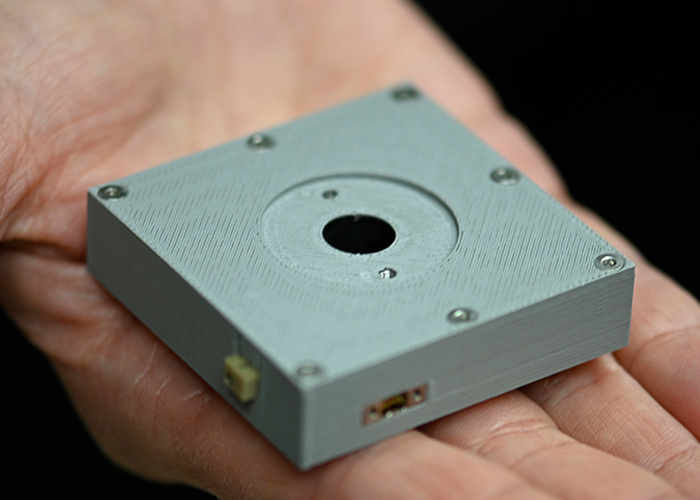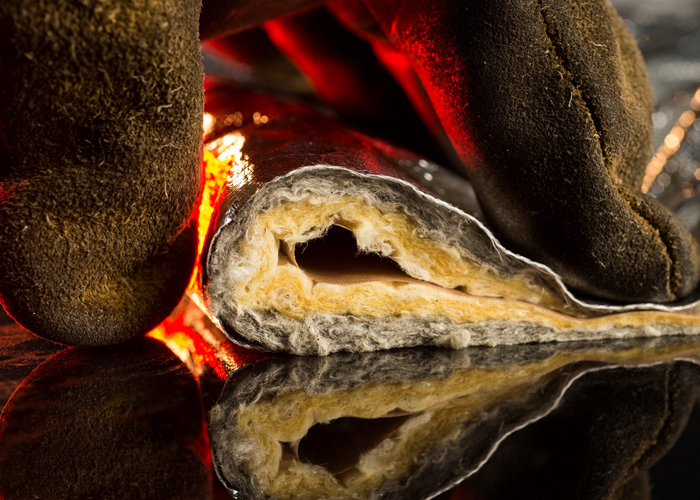Fires can't start in space because there is no oxygen in a vacuum. However, fires can still start on spacecraft, and they behave much differently in microgravity. Fire is a major concern in space travel since there are no firefighters or escape routes. Whether in space or on Earth, effective fire response needs versatile tools for prevention, detection, control, and personal safety. The following are examples of such tools that have been made available to the public through NASA’s Technology Transfer program.
NASA Technology Available for Licensing

Powerful fire detection in the palm of your hand
Originally developed for fire detection in spacecraft, the Multi-Parameter Aerosol Scattering Sensor (MPASS) is a rugged, versatile, and accurate system that can detect a diverse range of particles found in pollution, emissions, and fire. It is so sensitive it can detect particles at a nanometer scale, yet so compact it can fit in the palm of your hand. MPASS’ rugged and sensitive nature makes it ideal for surveillance missions when attached to a drone, or as a personal health device for first responders and public health safety professionals.
Heat shield technology finds a new home as a fire protection material
Heat resistant, flexible, and lightweight – these are some of the greatest strengths of NASA’s Multilayered Fire Protection System. This system was derived from heat shield technology on spacecraft and adapted to be as lightweight and portable as a fire blanket, yet durable enough to withstand temperatures up to 2,000 degrees Fahrenheit. This technology integrates an outer textile layer that reflects over 90 percent of radiant heat, an insulating layer that protects against convective heat, and a non-porous film layer that acts as a gas barrier.

Tracking system for emergency workers for when GPS is not reliable
When fighting fires in the wilderness, it’s important to keep track of the emergency workers that are waging a battle against the flames. However, GPS isn’t always reliable in these remote environments. NASA researchers have developed a new technology that can pinpoint the location of firefighters in these unique situations. The Real-Time Tracking system uses ultra-wideband (UWB) radio frequency (RF) signals for locating the position of transmitter-equipped people and objects. The system could also be used in military applications, the mining industry, and in space to track robots, rovers, and astronauts conducting exploratory missions.
Commercially Available NASA Technology
Store more gas in less space with higher pressure and lighter materials
Until the ’70s, tank design for storing liquids and gases was all-metal, and not only required lower pressures, which took up more space, but also weighed more. For firefighters, this often led to a choice not to use their breathing equipment because it was cumbersome and restricted movement. In response, NASA created a tank design known as composite overwrapped pressure vessels (COPVs) which are comprised of a tightly wrapped metal or plastic liner in high-strength filament embedded in resin – saving 60% of the weight of an all-metal tank, as well as allowing for higher-pressure storage and greater space efficiency. One of the first applications for COPVs outside NASA was for the tanks in firefighters’ breathing apparatuses, making them significantly smaller and lighter. Now COPVs have expanded their applications to include inflating the escape chutes in virtually every airliner in the sky, holding oxygen for planes’ emergency breathing systems, and even being used in paintball guns.
These are just a few examples of NASA technologies available for licensing. To browse NASA’s entire portfolio, please click here.
Follow us on LinkedIn, Twitter, and Facebook to stay up-to-date on all our latest technology offerings.



